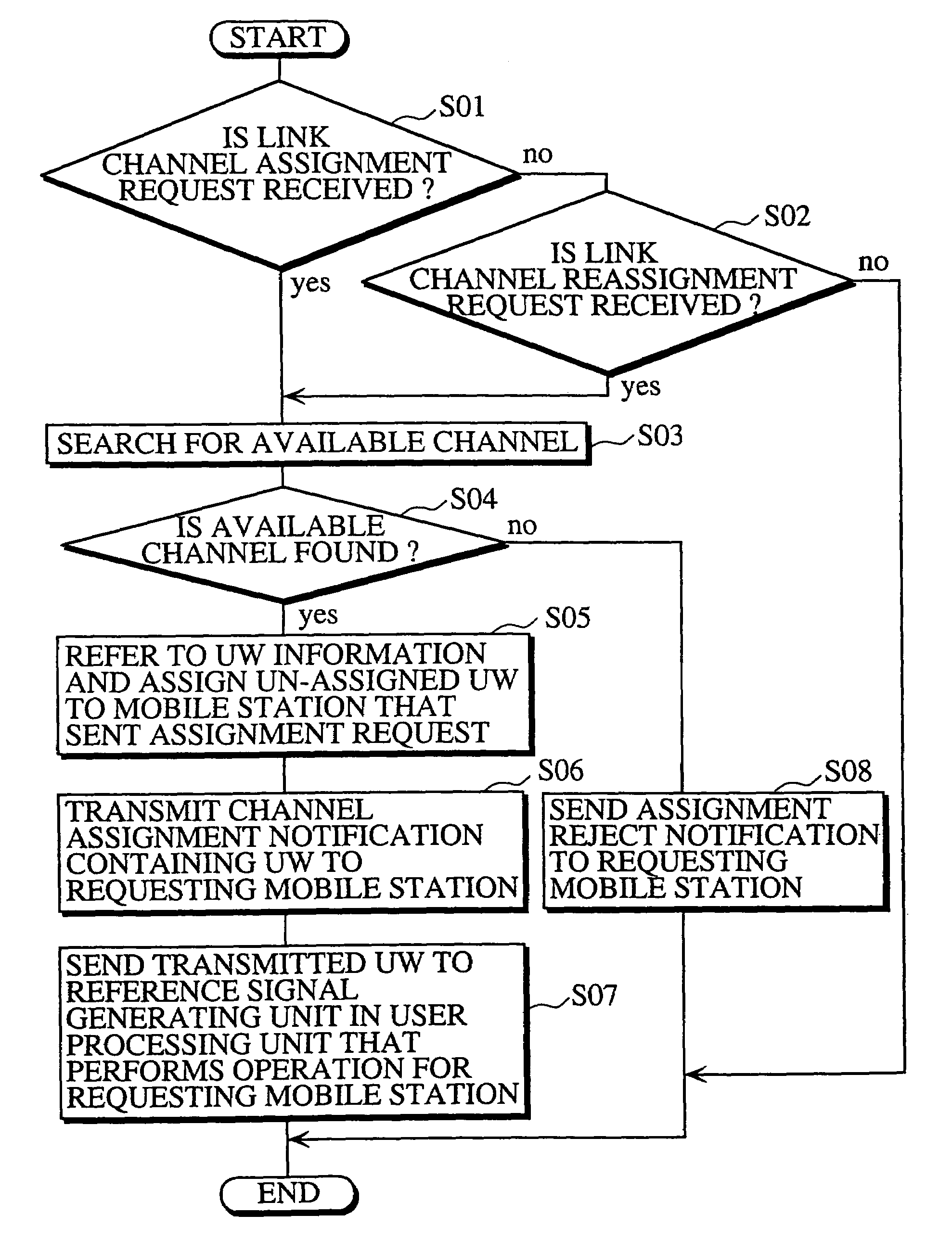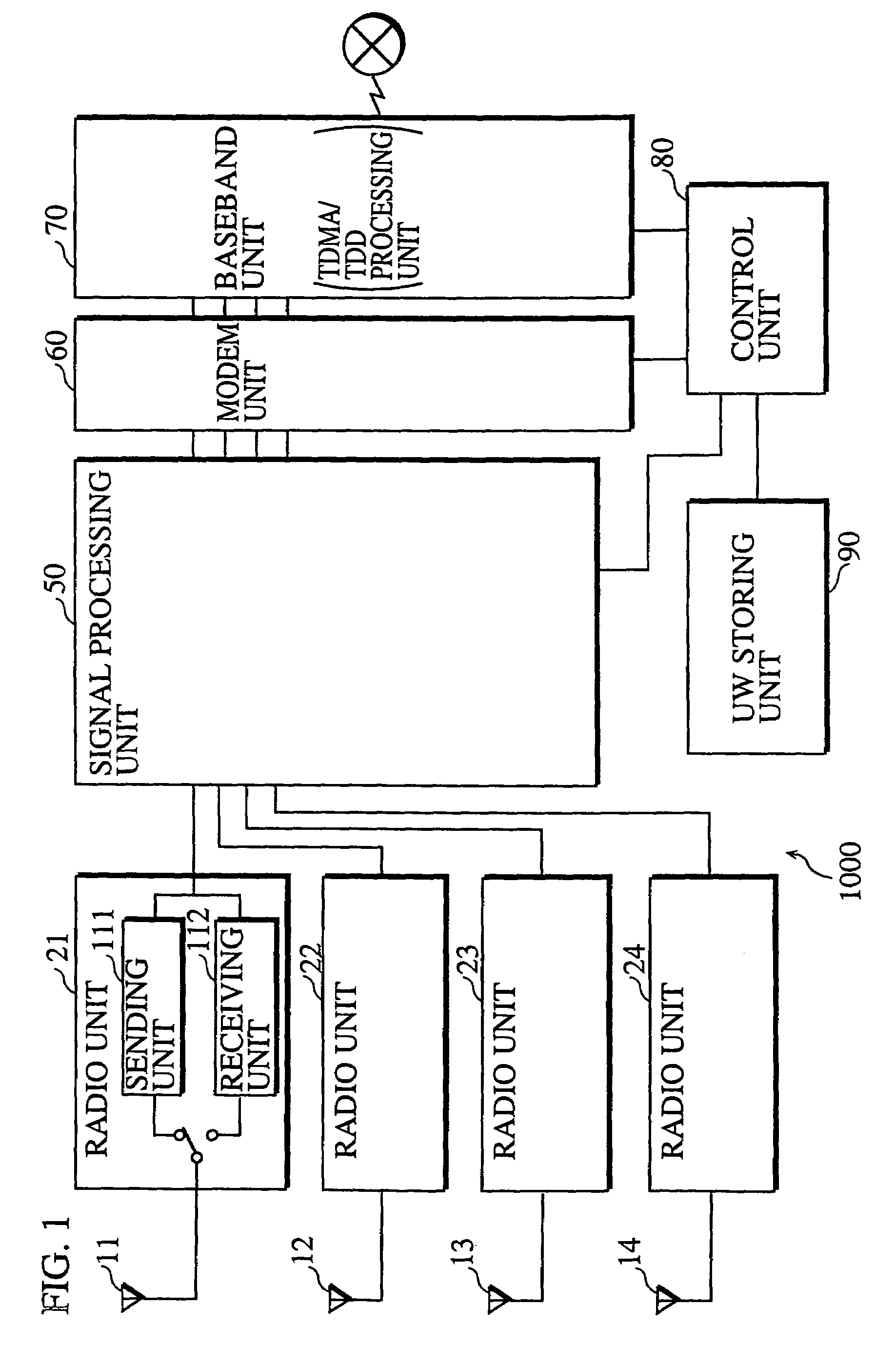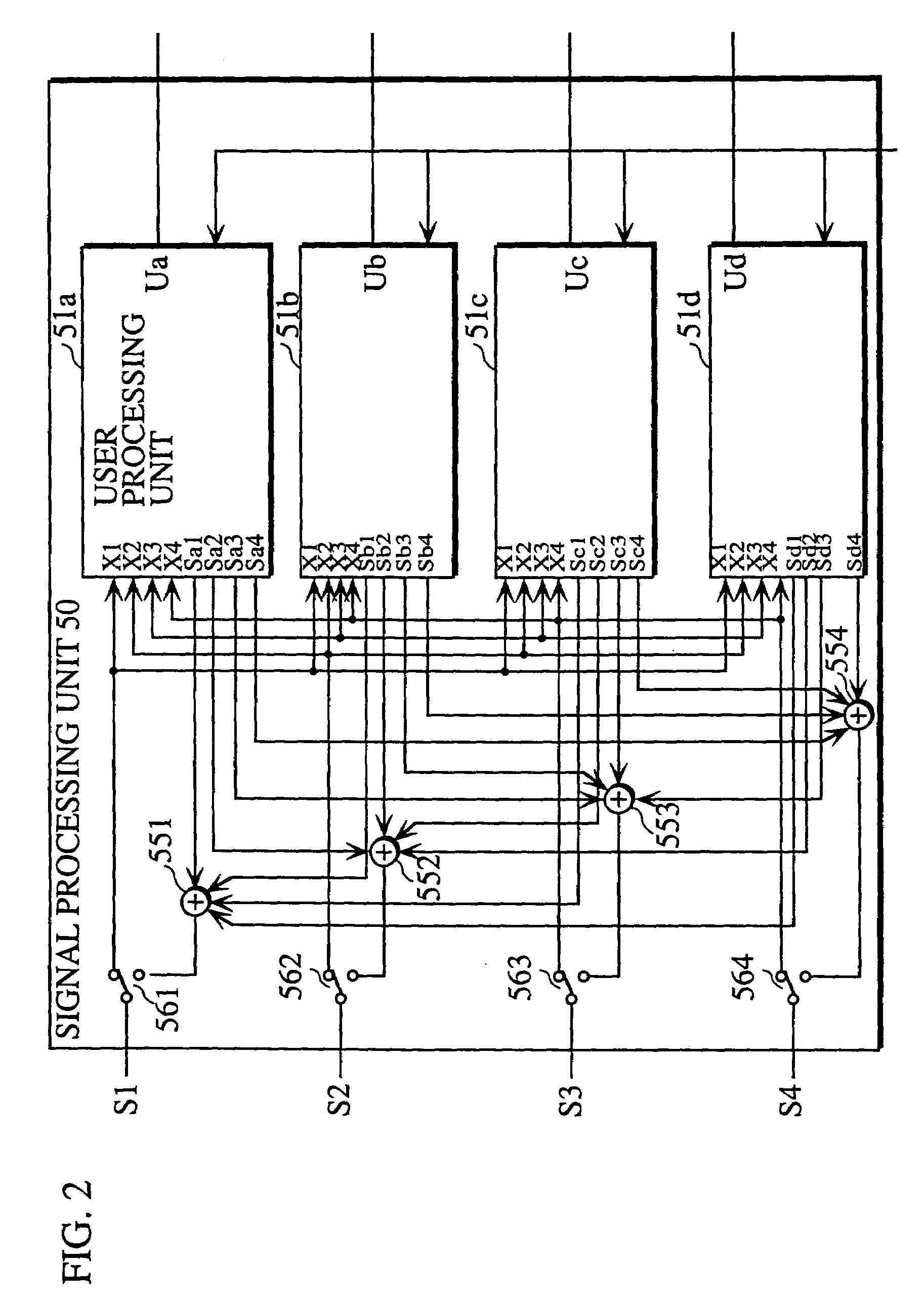Wireless base station and a wireless phone
a wireless phone and wireless technology, applied in the field of wireless phone and wireless base station, can solve the problems of lowering raising sending strength and receiving sensitivity
- Summary
- Abstract
- Description
- Claims
- Application Information
AI Technical Summary
Benefits of technology
Problems solved by technology
Method used
Image
Examples
first embodiment
Construction
[0046]FIG. 1 is a block diagram showing a construction of the wireless base station of the first embodiment.
[0047]The wireless base station 1000 uses the SDM method as well as a TDMA / TDD (Time Division Multiple Access / Time Division Duplex) method. The wireless base station 1000 wirelessly communicates with mobile stations which are PHS mobile phones by multiplexing four signals at most in the SDM via the same frequency. Hereafter, when a signal is multiplexed in the SDM and the TDM, the signal is said to be “SD-multiplexed” and “TD-multiplexed”, respectively. The wireless base station 1000 comprises antennas 11˜14, radio units 21˜24, a signal processing unit 50, a modem unit 60, a baseband unit 70, a control unit 80, and a UW storing unit 90.
[0048]The wireless base station 1000 has four channels in each TDMA / TDD frame in accordance with the PHS standard, and processes, in parallel, four signals for four telephone lines, which, are SD-multiplexed into a single channel. Ea...
second embodiment
[0083]The following describes a wireless base station of the second embodiment.
[0084]The wireless base station of the second embodiment has basically the same construction as the wireless base station 1000 of the first embodiment (see FIG. 1), but differs from the first embodiment in operation contents of a control unit 80 and in that UW information is not generated and stored into a UW storing unit 90 until the wireless base station receives a UW from a mobile station.
[0085]Note that each mobile station of the present embodiment has not only a construction conforming to the conventional PHS standard but also functions to determine an appropriate value to be used as a UW, send the UW to the wireless base station when requesting a channel assignment to the base station, and use, instead of a UW defined in the PHS standard, the determined UW for establishing a physical slot and transferring communication data to / from the wireless base station. Each mobile station achieves these functi...
PUM
 Login to View More
Login to View More Abstract
Description
Claims
Application Information
 Login to View More
Login to View More - R&D
- Intellectual Property
- Life Sciences
- Materials
- Tech Scout
- Unparalleled Data Quality
- Higher Quality Content
- 60% Fewer Hallucinations
Browse by: Latest US Patents, China's latest patents, Technical Efficacy Thesaurus, Application Domain, Technology Topic, Popular Technical Reports.
© 2025 PatSnap. All rights reserved.Legal|Privacy policy|Modern Slavery Act Transparency Statement|Sitemap|About US| Contact US: help@patsnap.com



